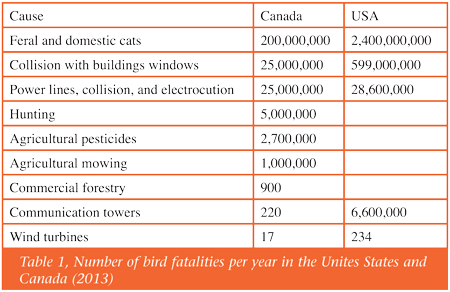- Category: Windtech Future
 As reported (1), certain large companies are deviating from their commitment to environmental concerns through investments in wind and renewable energy. Breaking a bold commitment by one of these companies to reduce oil production by 40% and invest significantly in offshore wind, which was seen as a pioneering move, is more than sad.
As reported (1), certain large companies are deviating from their commitment to environmental concerns through investments in wind and renewable energy. Breaking a bold commitment by one of these companies to reduce oil production by 40% and invest significantly in offshore wind, which was seen as a pioneering move, is more than sad.
By Ahmad Hemami, McGill University, Montreal, Canada
- Category: Windtech Future
 Tracing curiously the case of Siemens wind turbines in Hywind wind farm to see what the problem has been, requiring major repairs, I could not find any official statement in Equinor or SGRE websites. Obviously companies do not like to talk about their product failure or deficiency. Just recently I learned (1) that the “heavy maintenance” work included replacement of the main bearing(s). Certainly, this has not been the only repair.
Tracing curiously the case of Siemens wind turbines in Hywind wind farm to see what the problem has been, requiring major repairs, I could not find any official statement in Equinor or SGRE websites. Obviously companies do not like to talk about their product failure or deficiency. Just recently I learned (1) that the “heavy maintenance” work included replacement of the main bearing(s). Certainly, this has not been the only repair.
By Ahmad Hemami, McGill University, Montreal, Canada
- Category: Windtech Future
 Recently I came across a website [1] that lists the reports on various wind turbine failures or complaints made about wind turbine accidents in the neighborhood. Although the list may not reflect all the cases, it is a good representation of the real world and what has happened involving wind turbines. The list is extensive and covers the incidents in all countries since 2005.
Recently I came across a website [1] that lists the reports on various wind turbine failures or complaints made about wind turbine accidents in the neighborhood. Although the list may not reflect all the cases, it is a good representation of the real world and what has happened involving wind turbines. The list is extensive and covers the incidents in all countries since 2005.
By Ahmad Hemami, McGill University, Montreal, Canada
- Category: Windtech Future

- Category: Windtech Future
 It was shocking to me to read: Norwegian energy major Equinor will tow the five Siemens Gamesa turbines at the world’s first floating offshore wind farm to shore for “heavy maintenance” this summer. The above news can be found on many sites on the internet and from other sources. This is just after 6 years of operation, the majority of which has been very glorious and successful! (See for example [1], [2]).
It was shocking to me to read: Norwegian energy major Equinor will tow the five Siemens Gamesa turbines at the world’s first floating offshore wind farm to shore for “heavy maintenance” this summer. The above news can be found on many sites on the internet and from other sources. This is just after 6 years of operation, the majority of which has been very glorious and successful! (See for example [1], [2]).By Ahmad Hemami, McGill University, Montreal, Canada
- Category: Windtech Future

- Wind Versus Oil
- Are We Going to Reach Net-Zero Emissions?
- Can Future Wind Turbine Blades Be Modular?
- Not a Catch-22 Problem
- Vertical Axis Wind Turbines, Past, Present and Future
- Gear or No Gear, Not a Battle
- Battery Storage System for Deep-Water Wind Farms
- How Much Is the Cost of Wind Energy?
- Are Turbine Blades With Variable Twist Angle Practical?
- Time to Start Manufacturing Commercial Vertical Axis Wind Turbines
- How Many Wind Turbines Do We Need?
- The Good, the Bad and the Ugly About Wind Turbines
- Two Modes of Operation in Back-to-Back Converters for DFIGs, Is It Worthwhile?
- How Far Will Horizontal Axis Wind Turbines Grow?
- Are We Going in the Right Direction?
- A Design Concept for Future Offshore Wind Turbines
- Wind Turbines in 2100
- Drones or Robots for Blade Repair?
- Should Offshore Floating Wind Turbines be a Larger Copy of Onshore Turbines?
- The Race for Bigger Turbines Continues
- Why We Need More Green Hydrogen for the Global Energy Transition
- Global Gearbox Supply Chain Market Set to Grow to 59.1GW in 2020
- A New Generation of Offshore Wind Turbine Drive-trains Promises Power Ratings up to 16MW
- Renewable Energy Digital Services Benefits Are Not Fully Recognised
- Wind Energy Industry Has Lost US$ 5.2 billion Through Avoidable IP Infringements and Trade Secret Theft
- Wind Energy Industry Research and Development Spending to Top US$ 36.9 billion by 2028
- Feed-in Tariff Turmoil in Taiwan Will Likely Cause the Offshore Wind Industry to Shift Focus to Nearby South Korea
- OEMs are Shifting Towards Global Supply Chain Cost Optimisation at the Expense of Optimal Turbine Levelised Cost of Energy
- With +10MW Offshore Turbines as the New Normal in Europe, Where Do the Chinese OEMs Go Next?
- Wind LCOE Set to Drop Further Thanks to the Expiration of Seminal Patents
- The Right Product Mix and a Modular Architecture Can Protect OEM Profits in the Age of Tenders
- Renewable Energy Digitalisation Growth Poised to Reap Benefits for the Data Rich
- Turbine OEMs with Product Portfolio Diversity are Most Successful in US Wind Market
- Enercon Acquisition of Lagerwey Enables Competitive Product Evolution with PMG Technology
- Commercial Value of Data Has Increased Thanks to Digitalisation
- Onshore Wind Turbine Tech to Top Out in Ten Years
- Hybrid Materials and 3D Printing Enabling SciFi Wind Turbine Structures
- Can Wireless Mesh Networks Kill Slip-Rings?
- Offshore Wind Yet to See Meaningful Digital Services Deployment
- Focus on TLPs, Predictive Maintenance and AEP Optimisation to Further Reduce Offshore LCOE
- Renewable energy Internet of Things to hit US$ 5.3 billion annually by 2030
- Onerous Mandates on Performance Impact or Reliability are Stifling RE Innovation
- Emergence of Digital Services Highlights Need for Content Licensing Business Model
- Digitalisation Necessitates New Thinking and New Business Models
- How Common Platform Wind Turbine Architecture Unlocks Export Markets
- Closing the Product Competitiveness Gap
- Offshore Innovation Seeing Lift-off
- Consolidation Spurs Wind Innovation Revival
- The future of technology – Services
- Power plant control
Windtech International wants to make your visit to our website as pleasant as possible. That is why we place cookies on your computer that remember your preferences. With anonymous information about your site use you also help us to improve the website. Of course we will ask for your permission first. Click Accept to use all functions of the Windtech International website.








